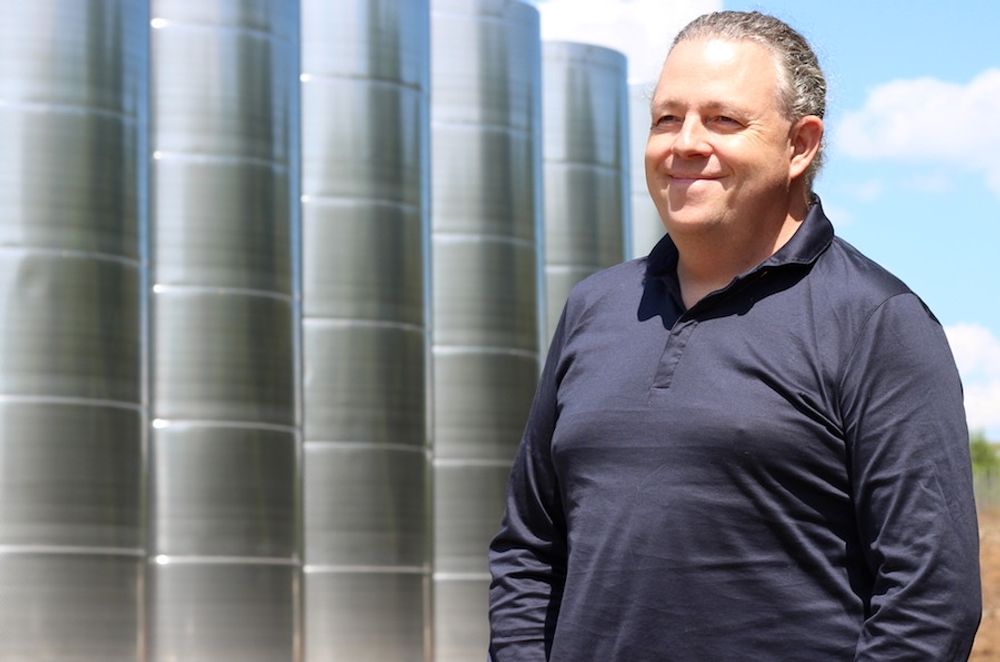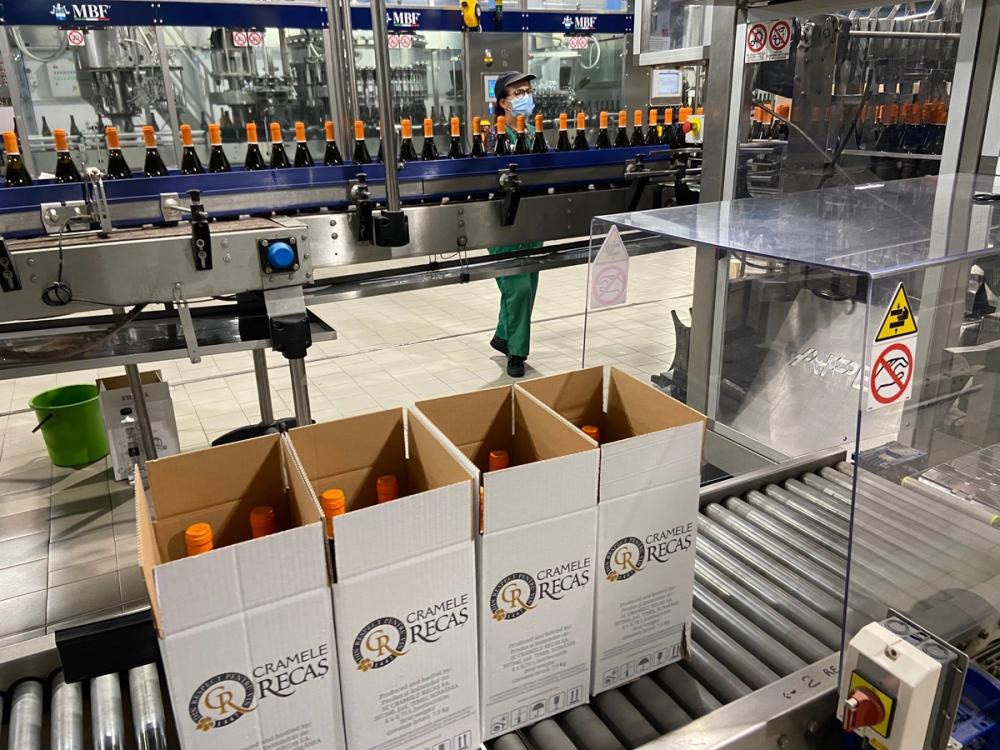Cramele Recas’ Philip Cox explains why he thinks PET bottles should become a must for entry level wines, leaving glass bottles only for premium and fine wines.
Tell us about your experiences with the shortages in glass bottles, increased prices and the impact on your business?
We have all been aware of severe problems in the glass industry for several years. Lack of investment, lack of innovation and a cartel/monopoly of a handful of large supply groups that run the glass industry in Europe has meant both increasing costs, insufficient quantity and diversity of supply on the market for a long time. This has all been amplified massively by the Covid period and the Ukraine war and subsequent energy crisis we have seen this year.
This means glass suppliers are able to increase prices, decrease availability at will and wineries have to struggle to get any bottles they can wherever and whenever they can. This has all lead to supply chain chaos, which has limited growth and resulted in multiple price increases during 2022. We just received our fourth glass bottle price increase in the last 12 months, meaning the cost of bottles have more than doubled in price since December 2021. This all comes just after we thought we had agreed (with great difficulty) our 2023 pricing with customers.

Philip Cox works with retailers and operators all over Europe supplying them with wine from Cramele Recas – Romania’s biggest wine exporter
Glass is the biggest cost element of a bottle of wine (after the wine itself) so it’s a huge problem, and the industry is set up to work on pricing set by vintage results annually. It really cannot cope with quarterly and irregular pricing changes. It is greatly damaging our relationships with customers.
However, much worse than all that is the sustainability of glass – which is frankly catastrophic and is the wine industries biggest source of CO2 emissions at around 40%. This has not been addressed at all by the glass industry. It uses huge amounts of energy to produce and glass factories cannot be shut down and run at molten temperatures 365 days per year – even if they are not producing. Then there is even more energy used to transport the glass, and recycling glass is heavy and dangerous to handle.
A huge targeted campaign has been made to attack the issues surrounding disposal of plastic, but in environmental terms the damage done by glass is king by a long distance. It just doesn’t float and end up on pretty beaches.
You are looking at different options including a new PET-based bottle. Can you explain more?
The bottles we are trialling are multi-barrier recycled PET, so they are 65% made from plastic recycled from local rivers, sea, and landfill site. The balance is a new type of barrier membrane which stops oxygen transfer allowing the wine to be stored for up to 24 months with no problem.
What is its carbon footprint compared to glass?
During the production phase glass has about two and a half times more CO2 emissions than plastic: 434 g CO2 equivalent for glass vs 178 g CO2 equivalent for plastic. But that is amplified enormously when you add in transport, and the use and disposal phase of a glass bottle’s life, as glass bottles are at least 10 times heavier than PET – on average 500g for glass vs 50g for PET.
So, for example, in a regular 40 ft container you can fit 30,000 PET 75 cl bottles versus less than 20,000 for glass in order to comply with road weight limits in all countries that allows for a maximum load weight of 24,500 kg. It means a container or truck carrying glass bottles is effectively only two thirds full in volume terms, but would be completely full when using PET bottles.
So overall the CO2 emissions for the lifetime of glass bottles, even relatively lightweight ones are five to 10 times more than PET, depending, of course, how far they travel and how many times they are moved.

The new recycled PET bottle being trialled by Cramele Recas
What are you doing in terms of the trial and seeing what the potential is in the trade?
Our trial is aimed at several things:
1) Seeing if we can bottle the new PET bottles on existing equipment.
2) Checking after bottling the evolution of the wine in this type of packaging and analysing how the wine evolves both analytically and taste wise with particular attention to oxygen and SO2 levels.
3) Testing it in supermarkets to see how the consumers react to this type of package and if there is any difference to rate of sale.
Have you had any interest from customers in taking part in the trial?
Yes, we are working with Penny, part of the Rewe Group which is a large group of supermarkets in Germany
What do they want to know in terms of agreeing to be part of the trial?
I think the retailers see the main barrier to alternative packaging is how it will affect consumer perception of the product and of course if it will limit rate of sale. We think that these recycled PET bottles, if promoted correctly as a more sustainable solution than glass, have the best chance of succeeding with consumers because many people probably will not even notice the change. They look very similar to existing glass wine bottles and thus do not require any change of behaviour from consumers – which can be a problem with cans, bag-in-box, paper bottles etc.
How have you been able to source them and is there a good supply to be able to scale them up?
Yes, the suppliers we work with are large European wide companies and they have plenty of capacity, also PET final production is much more small scale and flexible than glass production, so potentially if things work out, we can buy a machine and make them ourselves at the winery eventually.
What sort of reaction have you had from consumers?
Too early to say yet, the trial is only just starting, but so far, a lot of positive interest from trade customers and the press. The hardest part is getting the idea past retailers who are frightened of any such big changes, but now that glass is getting increasingly expensive and hard to find, I think that will be a factor which influences retailers and when they decide to do it, then things will change.

The bottling line at Cramele Recas is under severe pressure, says Philip Cox, due to glass shortages and price hikes
What potential do you think there is for this bottle in the market?
I see in the initial phase a quite good chances to expand into the travel sector and see how they can be used on planes, trains, stations and in public spaces. Then we can look at sports and concert venues. I also see a huge potential for online sales, as all the carbon footprint issues of glass are multiplied massively for wine sent by post and courier – both the weight issue but even packaging need for PET is nothing like that for glass.
After that it depends on retailers realising that the days of relatively cheap glass for entry level wines is basically over, and forcing change on the supply chain.
What proportion of bottles do you see being made from them in the future?
I think glass will always be used for mid and high-end wines. It’s so beautiful and is really a craft object. But around 80% of wines are entry level products, and two thirds of that is drunk within one week of purchase, so for that market PET recycled bottles are perfect.
What is the cost of the bottle compared to a glass bottle?
Glass bottles cost around 28-euro cent at the moment, increasing a further 16% from January 1. This is compared to 14-euro cent in December 2021. Plastic bottles produced on a small-scale cost 21-euro cent to make. On top of that, for a typical full truck or container load of wine going from here to the UK, for example, fitting in a third more wine means a further cost saving of around 6-euro cent per bottle using recycled PET, making it 12-euro cent a bottle cheaper than glass for the same wine. This means the retail price can be at least 30p a bottle cheaper.
- You can find out more about Cramele Recas here.
- You can read Philip Cox’s article in April warning about the “apocalyptic” packaging crisis coming our way here.
- Cramele Recas is a supplier partner to The Buyer.
































